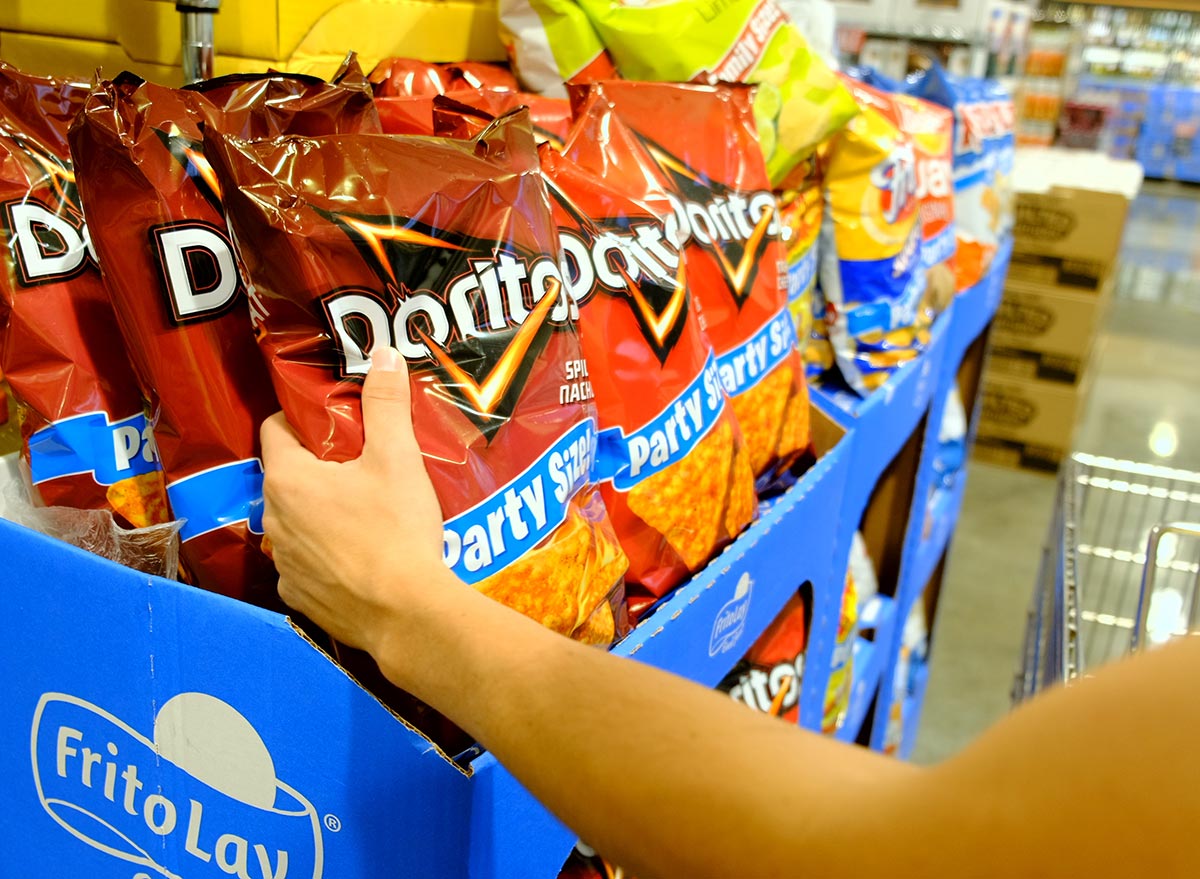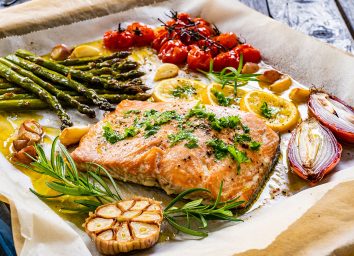Drastic Changes in Food Packaging Are Making You Overeat, Says New Report

Since 1999, obesity rates in the United States increased exponentially—from 30.5% to 42.4% by 2018, according to the Center for Disease Control and Prevention. The 2020-2025 Dietary Guidelines for Americans states that as of 2018, 74% of U.S. adults were considered overweight or obese, putting them at higher risk of developing chronic diseases.
Unsurprisingly, a recent report published in the American Journal of Public Health (AJPH) shows increased obesity rates paralleled to the increased sizes of packaged foods and fast food items in America—between two and five times the previous normal serving sizes when originally introduced. Many products did not change since 2002 recommendations, with packaging still five times bigger than previously.
“Larger packaged portions lead to overeating because people pay little attention to the size of their portions, focusing instead on what they are eating,” says Lisa Young, PhD, RDN, member of our medical expert board, and a lead researcher for the AJPH report. “Research also shows that we eat more when presented with more food—even if we are not hungry and don’t like the food.”
This original report, published on Dec. 8 by Young and Marion Nestle, PhD, MPH, focuses on larger portions for ultra-processed foods and calls for policies and practices to be put in place that will encourage proper serving sizes.
The study states that “current US policies support the production of larger portions through subsidies of basic ingredients that promote overproduction and low prices. Food in the United States is relatively inexpensive compared with the costs of manufacturing and service, and larger portions can generate additional revenue for little cost. To consumers, large portions may appear as a bargain, but they contain more calories and encourage overeating.”
To put this into perspective, while a large Coca-Cola from Burger King in the U.K. contains 262 calories, in the U.S. the large is big enough to consume 510 calories.
Bigger portion sizes negatively affect the health of lower-income communities.
This isn’t the first time Young or Nestle presented their research and encouraged policy change. Together, both experts published previous reports including one in 2002 where they noticed an increased size in marketplace food portions that exceed federal standards, even though physical activity remained the same. Their 2003 report in the Journal of the Academy of Nutrition and Dietetics states that this lack of change could easily be linked to the increased prevalence of overweight Americans.
And yet, while previous versions of the Dietary Guidelines for Americans has called obesity “the single greatest threat to public health in this century,” Young and Nestle point out a lack of change in portion sizes served at restaurants and in packaged food in their 2012 report through the American Journal of Preventive Medicine.
“It’s important to focus on what we eat along with how much we eat,” says Young. “Both matter for good health!”
Their AJPH report also calls out the socioeconomic factors associated with weight gain, which is typically seen in communities of “poverty, inadequate education, racial and gender discrimination, unemployment, and lack of health care.” Frequent consumption of these foods happens within these communities (lack of resources, low income, food deserts, etc.), making this particular issue a major health concern for public health. Reducing portion sizes served could be a “useful strategy to improve public health,” according to their report.
Young and Nestle’s report refers to an article published in the BMJ which points out that 60% of calories consumed between 2007 and 2012 came from ultra-processed foods. Consumption rates of these foods decreased when comparing age and income level, as well as consumption for communities with lower levels of education.
Awaiting policy change, experts provide solutions for portion sizes.
To conclude their report, Young and Nestle state solutions including price incentives for selling smaller portion sizes of ultra-processed foods, discontinuing larger sizes, and even restricting marketing of large portions. Particularly around children and minorities.
However, as policies remain the same, Young suggests a few ways in which to start these practices yourselves to ensure better health for your body.
The first is to buy single-serve items. Instead of opening a big bag of chips, open a small one that is meant for one person.
“While we may eat ‘several servings’ from a big bag of chips, we are unlikely to open a bunch of small bags,” says Young. She also states that if buying a big bag is better for your budget, dividing it into smaller portions to eat for later can be an easy solution.
Another is to add more fruits and vegetables to your meals.
“You really do not need to worry about how much you are eating of these,” says Young. “The fiber will help you to feel full so you will, most likely, stop eating when satisfied. And focus on the positive nutrients and antioxidants you are getting. No one got fat from eating too many carrots.”
If fresh produce isn’t readily available for you, experts do confirm that eating frozen vegetables or fruit can be an easy solution. Low-sodium cans of vegetables can also help in providing a nutritious side for meals.
Lastly, Young says to keep measuring cups handy when you’re cooking at home.
“While you don’t need to weigh everything you eat, when you pour out cereal, for example, put a one-cup serving into a measuring cup rather than pouring the cereal straight into an oversized bowl,” says Young.
For even more healthy eating tips, read these next:








